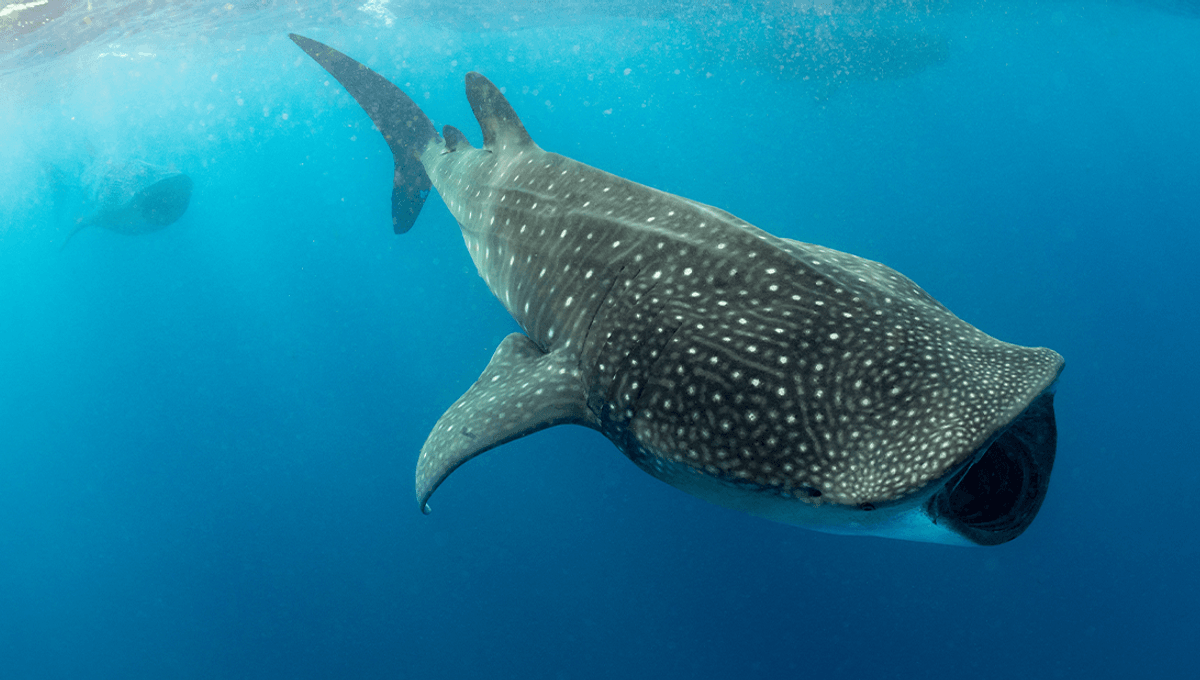
Whale sharks, despite being the largest fish in the ocean, still have pretty secretive sex lives. What we do know about the reproductive behaviors of whale sharks is largely based on observations from aquariums or chance encounters in the wild – however, off the coast of Western Australia, scientists have witnessed what they believe to be their courtship behaviors.
Whale shark reproduction is such a mystery that only one pregnant shark has ever been documented, and that was in 1994. Two locations, around the St Helena Islands in the Atlantic Ocean and at Ningaloo Reef in Western Australia, are the sites of some potential observations of courtship and mating. For example, fishers have anecdotally reported whale sharks gathered together and males swimming belly up below what are thought to be sexually mature females.
“At Ningaloo Reef, and many aggregation sites around the world, males outnumber females with a ratio of 1 female to 3 males,” study co-author, PhD candidate Christine Barry from Murdoch University’s Harry Butler Institute and the Australian Institute of Marine Science, said in a statement. “This could explain why female whale sharks may be avoiding aggregation sites. Particularly for juvenile female sharks, the energetic costs of unwanted attention from males could imply a reason for strong male biases.”
At Ningaloo Reef, researchers conducted field expeditions which involved spotting the whale sharks by plane and then directing a boat towards the sighting. The boat team then entered the water to take scientific observations and determine the sex of the whale sharks in the area.
On May 14, the team entered the water with a 7-meter (22.9-foot) long female whale shark. The team states that female whale sharks under 10 meters (32.8 feet) are not thought to be sexually mature. Shortly after, a male whale shark swam up behind the female. Over time, the male was observed lunging at the tail fin of the female and biting its tail. After some interaction between the two, the female quickly went deeper into the water, followed by the male.
The team thinks that, based on their own observation and those from aquariums and fishers around St Helena Island, this behavior fits with others as pre-mating behaviors between the two whale sharks, it also fits with records from different species. “Notably, male zebra sharks (Stegostoma fasciatum) – the closest living relative to whale sharks – have also been observed biting the tails of female zebra sharks,” write the authors in the paper. The increasing availability of camera phones and citizen science make recordings of hard-to-see species more accessible to scientists.
Despite the potential pre-mating behavior seen, the researchers do not think the two whale sharks they saw would have had a successful mating. While they acknowledge it could have occurred in deeper water beyond their sights, the team thinks the female was actively resisting the attentions of the male, and thinks that the female was too small to be sexually mature.
The paper is published in Frontiers in Marine Science.
Source Link: First Ever Observation Of Whale Sharks' Mysterious Love Life Caught On Camera